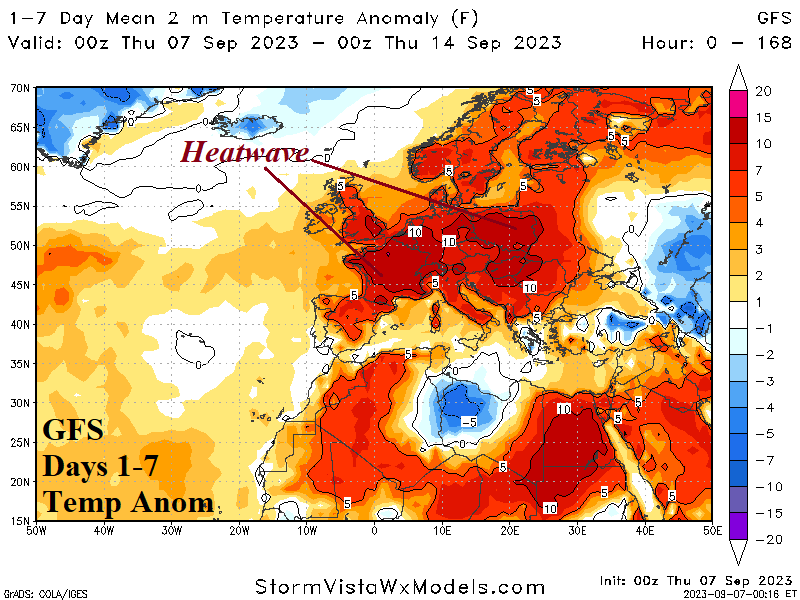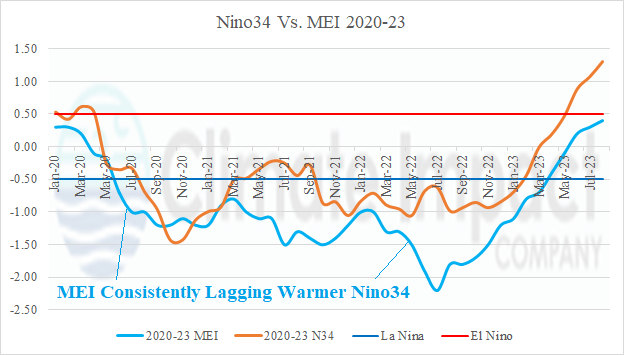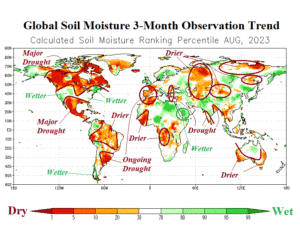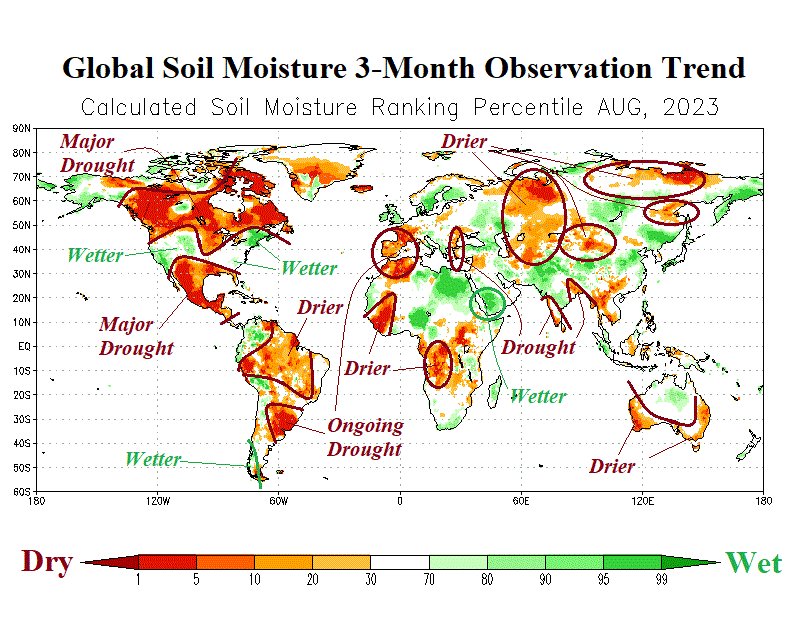
More High Impact Weather: Drier Midwest Forecast, Europe Heatwave, SE Brazil Floods, and New Heat Australia
09/07/2023, 8:25 am EDT
Refining the ENSO 2023-24 Outlook by Including Multivariate ENSO Index
09/10/2023, 4:22 pm EDTHighlight: Many areas encountered worsening/developing drought during JUN/JUL/AUG 2023; El Nino brings wetter subtropics in the northern hemisphere while southern hemisphere subtropics turn much drier ahead.

Fig. 1: August 2023 global soil moisture anomalies and 3-month trend.
Observation discussion: During JUN/JUL/AUG 2023 large regions of drying soils and/or worsening drought outnumbered wet regions by approximately 15 to 4 (Fig. 1). The tendency for dryness in the northern hemisphere is linked to above normal mid-troposphere high pressure associated with large areas of anomalous warm mid-latitude oceans including marine heatwaves (MHW). In the southern hemisphere, oncoming drier soils are mostly related to a developing El Nino climate.
In the northern hemisphere, the most profound drought stretches across Canada where worsening conditions were observed during meteorological summer. The Canadian dryness stretches to the Midwest U.S. Another impressive drought strengthened over Mexico extending to Texas and vicinity during the past 3 months well-correlated to the historic summer heat in that region. Wetter soil conditions evolved in parts of the Interior West U.S. and Northeast States during summer.
Elsewhere in the northern hemisphere, strong drought persists from Northwest Africa to Southwest Europe initiated by a MHW generating off Northwest Africa earlier this summer season. Related to this weather pattern is the emergence of the horrific Southeast Europe drought pattern recently stretching to the Western Black Sea zone. Central Europe and Baltic State drought eased during late summer. Worsening drought was observed across Central Russia and parts of East and Northeast Russia. Drought developed over Southwest and Northeast India. Interior China was excessively wet.
In the southern hemisphere, drought in Brazil developed and expanded although Southeast Brazil has recently shifted much wetter. The Northeast Argentina/Uruguay drought worsened. Southern Chile drought was erased by heavy rains. Western tropical Africa turned much drier. In Australia, a much drier trend was observed on the west, south, and east coasts.

Fig. 2: August 2023 global soil moisture anomalies and 3-month forecast.
Forecast discussion: The forecast for quarter 4 of 2023 is mostly related to a peaking El Nino (by December) which causes wetter climate easing the Mexico to Texas drought and turning the Southeast U.S. soils much wetter (Fig. 2). A tendency for dryness north of that wet stretch may develop. The upper West Coast of Canada turns drier and Northeast Canada drought worsens (lack of snow).
The most profound climate pattern across Eurasia is a wet belt associated with a stormy subtropical Jetstream stretching from North Africa across the Middle East and east of the Caspian Sea to well north of India. North of this wet zone, dryness in the Western Black Sea region worsens and Southwest Russia is also dry (lacking snow). Parts of Southern Scandinavia to Central Europe are also dry.
Buoyant snows are likely on the North Coast of Russia during early winter 2023-24. El Nino inspires a much drier climate leading to widespread drought across Southeast Asia, Indonesia, and Australia.
![Climate-Impact-Company-logo-sm[1]](https://climateimpactcompany.com/wp-content/uploads/2023/08/Climate-Impact-Company-logo-sm1.png)
